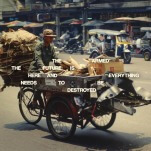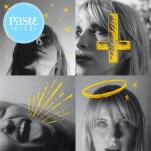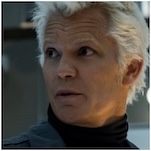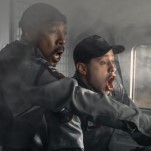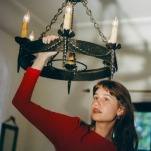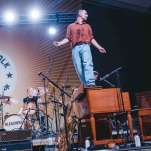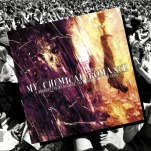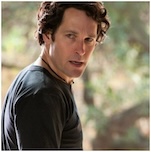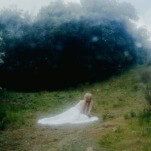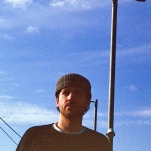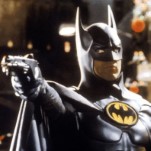Bob Dylan: Another Self-Portrait: Bootleg Series Volume 10

It was a burnt-out and exhausted Bob Dylan who climbed onto his motorcycle on July 29, 1966. A few days out of a grueling nine-month tour that took him all over the world, he probably wasn’t at the top of his game when his rear wheel locked and he flew over the handlebars and onto the pavement.
It was an inconvenient time to get laid up with injuries: his manager Albert Grossman had booked appearances and recording sessions well into the next year. In retrospect, the enforced hiatus may very well have saved Bob Dylan’s life. As he said in a 1984 interview, “When I had that motorcycle accident, I woke up and caught my senses. I realized that I was just workin’ for all these leeches. And I really didn’t want to do that.” His injuries, in reality, weren’t all that serious, but it gave Dylan pause, time to reflect and consider the insane trajectory that he’d been on for that past few years. He canceled his upcoming tour, holed up at his Woodstock property, spent time with his children, learned to paint and continued to make informal music with members of The Band in the Big Pink house down the road. Personally, it must have been one of the most fulfilling and enjoyable chapters in Bob Dylan’s life, but it also marked the beginning of a shift in his music that continues to baffle many of his listeners and fans even today.
When John Wesley Harding came out in 1968 to mark the end of Dylan’s recording hiatus, it was warmly received. The simple acoustic sounds it embraced were a world away from the anarchic music that accompanied Blonde on Blonde and Highway 61 Revisited. At that time, psychedelic music was at the peak of its popularity with artists like Jimi Hendrix and Cream on the top of the charts. Songs like “As I Went Out One Morning” and “Frankie Lee and Judas Priest” still retained the surrealistic lyrical edge of some of Dylan’s earlier songs, but the music that accompanied them was ruggedly melodic and prefigured the Americana movement by several decades. Dylan did not tour to support John Wesley Harding or Nashville Skyline, his next album that was released in 1969. Like its predecessor, the songs on Nashville Skyline reflected the concerns of a simpler, gentler world than his fans were accustomed to. There were no protest songs or stream-of-consciousness rants, just beautifully rendered songs about love, loss and redemption that could have been recorded by Hank Williams or Johnny Cash, who sang with Dylan on the new version of “Girl From North Country” that opened the album. For many people, the album seemed “light,” and there was much debate about the country tenor that substituted for the Dexedrine nicotine rasp of the past. In interviews, he spoke of family life and quitting smoking as he answered questions with thoughtful sincerity. Where had Bob Dylan gone?
In retrospect, Dylan was simply ahead of the curve. When you listen to them today, the songs on Nashville Skyline seem to reflect a natural simplicity that many people in the late ‘60s were searching for. All of the drugs, politics and intensity that were flying around at the time had begun to take their toll, and many people were looking for a way to dial back, drop out and reassess what to do with their lives.
It’s always dangerous to make assumptions or assign meaning to another person’ life, but it’s still easy to imagine that after working so hard without a break for a half decade, Bob Dylan wouldn’t have been that eager to pick up the reins of his career and carry on as if nothing had happened. As a young man with a family, the obligations of his career must have seemed terribly out of synch with the bucolic lifestyle and easy relationships he was enjoying at Woodstock. For a man who loved music but hated fame and the music industry, his next step to take must have been a difficult thing to ponder.
On the surface, Dylan’s solution seemed to be the release of Self-Portrait, an album that was almost universally hated when it came out. A collection of covers and live selections from the 1969 Isle of Wight appearance, it was a baffling two-record set that did nothing to capitalize or showcase Dylan’s strengths as a performer. Why would the greatest songwriter of the age record overproduced versions of other people’s material? Dylan has offered several explanations over the years, the most popular being that he recorded a “bad” record on purpose to scare away some of the freaky fans who stalked him wherever he went and regularly showed up at his family home. While there may be a grain of truth in this explanation—Dylan has always recorded what he wants to without worrying about his listeners’ reactions—it doesn’t really hold a lot of water.
The release of two CDs of outtakes from the Self Portrait and New Morning sessions, entitled Another Self Portrait, tells another story. The box set profiles demos and early versions of songs that eventually wound up on Self Portrait to show listeners how differently the album would have come off if Dylan’s early vision had been adhered to. The greatest impression these newly unearthed songs create is of an artist rediscovering the ease and joy that brought him to music in the first place. The songs sound exactly like what they are—a young man sitting down with his guitar and informally singing some of his favorite tunes with friends. The rough and ready recordings of songs like “Copper Kettle,” “Bring Me A Little Water” and “Pretty Saro” come off perfectly. “Days of ‘49” finally sounds as weary and regretful as we always knew it did under the gloss. It’s hard to pick favorites amongst the 35 songs that have been generously crammed onto two discs, but the simple demos of “Belle Isle” and “When I Paint My Masterpiece” come very close to the top of the list.
-

-

-

-

-

-

-

-

-

-

-

-

-

-

-

-

-

-

-

-

-

-

-

-

-

-

-

-

-

-

-

-

-

-

-

-

-

-

-

-







